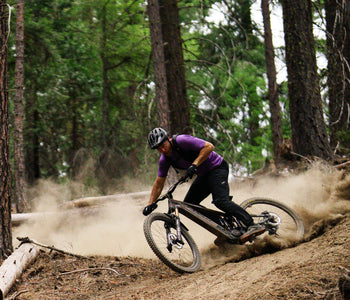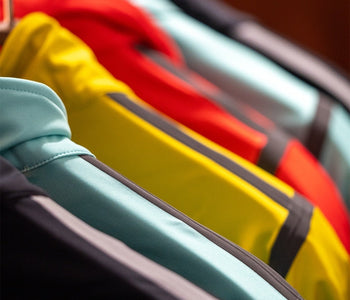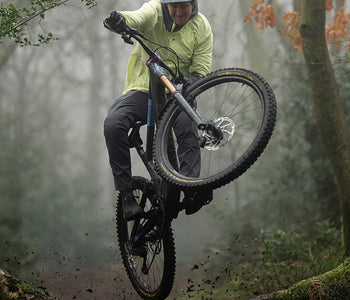The Castelli Gabba's 10th Anniversary
By Stan Portus – 18 March 2020
As the Castelli Gabba enjoys its 10th anniversary on the shoulders of all-weather cyclists in the know, we take a look back at its origins and rise to prominence as the must-have foul-weather jersey.
17th of March 2013. The 104th edition of Milan–San Remo was plagued by biting cold snow blizzards and rain. At 298km the Spring Classic is the longest one-day race in the cycling calendar, meaning riders must endure whatever the weather throws at them for much longer than usual. The 2013 edition of the race was unusual because due to the weather the race was neutralised after 112km. The pros stopped racing, boarded team buses and were transported to a restart point. But there was something else unusual about that day too.
Black jerseys were on the shoulders of at least half the field. The riders had spurned team-issued wet weather gear opting instead for an item of clothing that had begun to gain a considerable following in pro peloton, the Castelli Gabba.

The Origins
The Gabba’s origins go back to 2009 with a discussion between Castelli and a group of professional cyclists hailing from cool-weather countries, including Norwegian rider Gabriel Rasch. The pros weren’t satisfied with conventional rain jackets that had been adapted from the world of mountaineering and sought an alternative solution for top-tier racing.
To get around the boil in the bag sensation experienced when racing in foul weather wearing a rain jacket, Gabriel Rasch had hand sewn short sleeves onto an existing Castelli rain jacket as a hybrid cold-weather upper. Here an idea began to germinate.
Several months later, and with more feedback from the pros, Castelli’s research and development team had taken Rasch’s idea and created the first prototype of the 'Gabba' – Gabriel Rasch’s nickname.
The Gabba took cues from Castelli’s contoured Aero Race short sleeve jersey but employed a dedicated Windstopper fabric developed by Castelli and Gore. Windproof, water-resistant but highly breathable, the Gabba spoke of everything the pros had been asking for.
Its First Appearance
The Gabba was officially launched in 2010 when Cervélo Test Team used the jersey at Omloop Het Nieuwsblad. It was the first time the riders had worn the new jersey and Steve Smith, Castelli’s brand manager, remembers the excitement felt by the riders: ‘I’d never before and never since seen riders respond in this way to a new garment.’
Gabriel Rasch remembers the atmosphere prior to the race when they rocked up in the jerseys:
‘We came to the first race and everybody was looking at us. Nobody said anything but they were all looking at us, thinking, “What is this?”’
The day before the 2010 Omloop, Jeremy Hunt, Cervélo Test Team rider and known Classics hardman, remarked that he thought other brands would try and copy the jersey, and he wasn’t wrong. But despite many imitations, no other jersey has come close to the magic that suffuses the original garment.
After the launch Castelli were soon inundated with requests from other teams for the jersey, receiving mystery phone calls from people asking Castelli to make the jersey for them. Castelli initially refused as the jersey was such an advantage for their own riders, but eventually Castelli gave in. The cycling world is after all a family, with friends across teams helping each other out.
The 2013 Milan–San Remo
The months before the 2013 Milan–San Remo had seen particularly bad weather. The pros began to dissent from their team’s kit and started buying Gabba jerseys with their own money. Cancellara bought a Gabba for Tour of Flanders that year, and Thomas Voeckler ordered Gabbas at shop price for his entire Europcar team.

The 2013 Milan–San Remo winner Gerald Ciolek wore a Gabba until the closing moments of the race, and Fabian Cancellara also wore one to take third. Matteo Montaguti, who wore the jersey during his gruelling day battling the rain and snow in the race’s breakaway said that, ‘From that moment on I never let go of my Gabba.’
Road.cc deemed that alongside Ciolek, the jersey was the other winner of Milan-San Remo.
After the media attention the public began to cotton on to the potential of the jersey, and it quickly became a staple item for anyone wanting to beat the rain – a position it still holds today.
In honour of its success and its notorious place in the pro peloton, in 2014 Castelli released the ‘pro edition’ black Gabba, which came with its own black marker pen in homage to the pros who would black out the Castelli Scorpion to not offend their kit sponsor.
The Gabba Ten Years On
Throughout its iterations over the last few years, the Gabba has continued to speak of phenomenal foul-weather performance and the addition of its long-sleeved sibling, the Perfetto, has only built on that pedigree.
Now in its fourth iteration the Gabba is more advanced than ever and remains a favourite with the pros and mere mortals alike. The latest version of the jersey uses Gore Infinium 205 for water repellency in the front body, and Gore Infinium 203 in the back for plenty of ventilation.
The Gabba has been adopted into Castelli’s widely lauded Rain or Shine (RoS) family, giving a whole new level of foul-weather protection, and of course maintains the breathability that makes up a significant part of the garment’s DNA.
The guiding idea behind RoS is that you simply layer up according to the temperature expected without worrying about what the weather decides to throw at you.
The Castelli Gabba and Perfetto RoS garments utilise taped shoulder seams and an all-new Infinium fabric, developed exclusively by Castelli and Gore, to give a truly remarkable level of high-grade water protection without compromising breathability.
Sam Challice recently extolled the latest version of the jersey giving it a 5-star review in Cyclist:
“I’d say the Castelli Gabba RoS remains as invaluable a purchase as it always has been. A rider, particularly one who does most of their riding in Britain, needs a weather protective top in their cycling wardrobe. In choosing a Castelli Gabba RoS that rider is guaranteed not to go too far wrong.”

From its origins as a hand sewn rain jacket to its place today as essential wet weather equipment, the Gabba has come to shape modern road cycling. Now celebrating its tenth anniversary, its influence still holds strong. Often imitated, but never beaten, the Gabba is looking as potent as ever.
Read More
Rouleur Live Gallery
We brought the best of performance cycling to Rouleur Live, showcasing ENVE, Cannondale, Castelli and more across two days in London.




